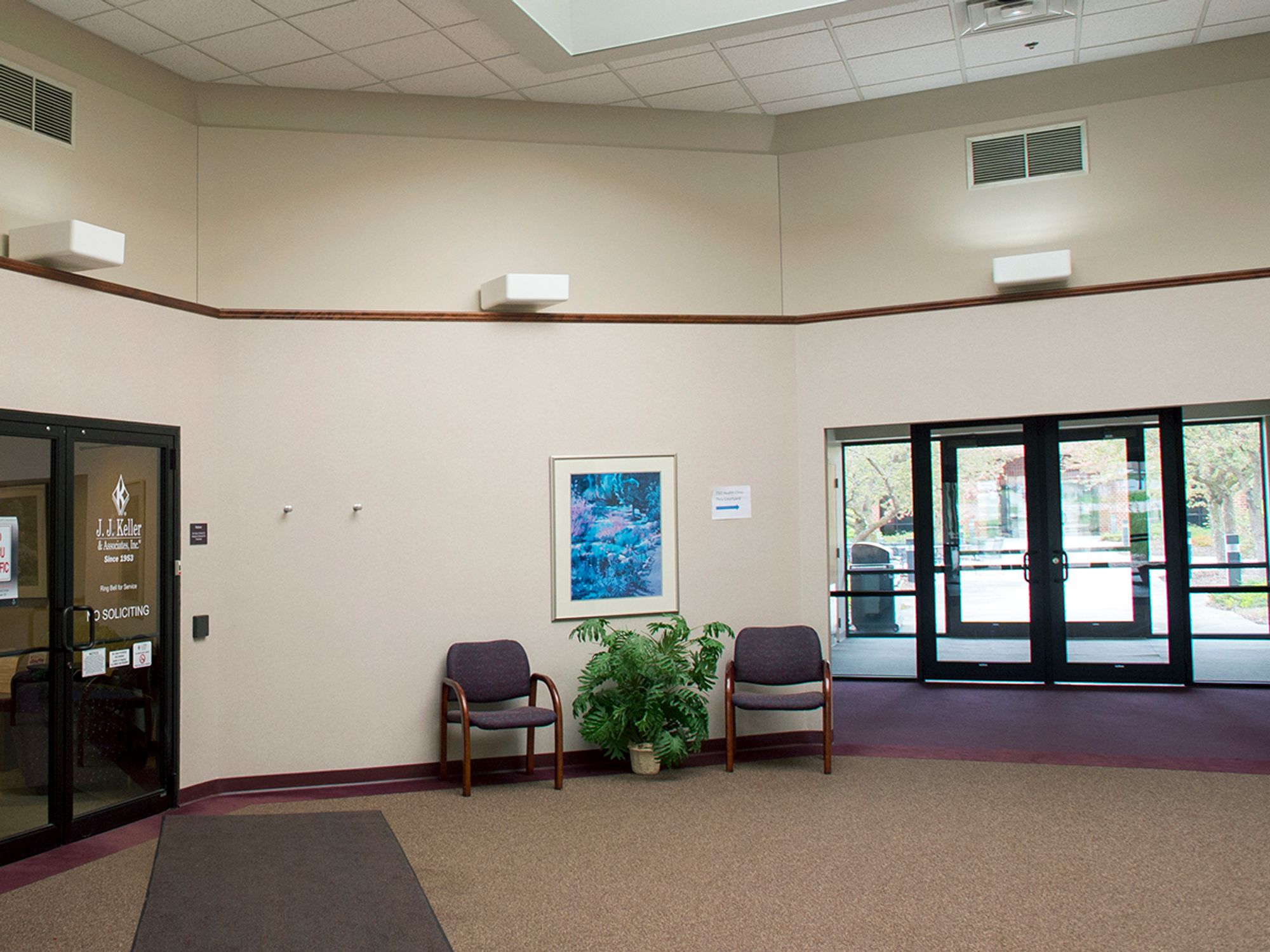Doorways and entryways

After basic perimeter security, a doorway may be the next best defense against an intruder. In the case of a smaller company, a securely locked door may be the only defense. It’s critical that all entrances and exit gates and doors are secured when not in use.
- Are employees leaving perimeter doors unlocked or propped open?
Maintenance
Make sure all gates and doors are structurally sound, locks are substantial enough to prevent unauthorized entry, and latches close securely. If an entrance needs maintenance, have it done as soon as possible.
A company should examine all doors and replace parts or entire doors if the items provide inadequate protection. A door is only as strong as its composition and points of attachment (i.e., what it’s made of and the strength of locks and hinges).
Generally, an intruder hoping to break through a door will start with the locks, but then may move to the hinges, glass panels, or other areas of the door. Doors with significant amounts of glass should be equipped with additional security measures such as an alarm system, steel bars, or wire mesh, or should be under constant guard. Hollow-core or paneled doors should be reinforced, perhaps with a steel plate inside.
Clean and lubricate doors and adjust them as necessary (remember that wooden doors may change shape with the seasons).
Restricting entry
Never allow just anyone into a building. It is good company policy to require each employee to use that worker’s own ID to enter the building. If possible, IDs should have the employee’s picture, name, and department or function, but remember that it’s relatively easy to fake an ID.
Businesses should have a written policy that includes immediate reporting of lost or stolen security badges or IDs, because most automated systems are unable to tell if the person entering the building is the same one originally issued the ID.
Instruct employees not to hold the doors open for others unless the employee knows the person and the person is a current employee. All visitors should be instructed to use a designated visitor entrance.
- Are employees letting people without badges in?
Employees, too, should be restricted to designated employee entrances and exits. Emergency exits should only be used in an emergency.
To control who enters the facility, install a security checkpoint, either with personnel or automated. At a minimum, companies should consider a security guard or receptionist at the door screening those who enter the building, or a device that automatically scans employee ID cards or badges and only unlocks the door for authorized personnel.
- Do people tailgate each other into the facility?
Establish set hours during which employees may enter the building(s). If access is necessary after hours, employees should be instructed to contact a security guard who can screen the employee and provide access if authorized. If an automated access card system is in place, program the cards to limit access during non-business hours.
